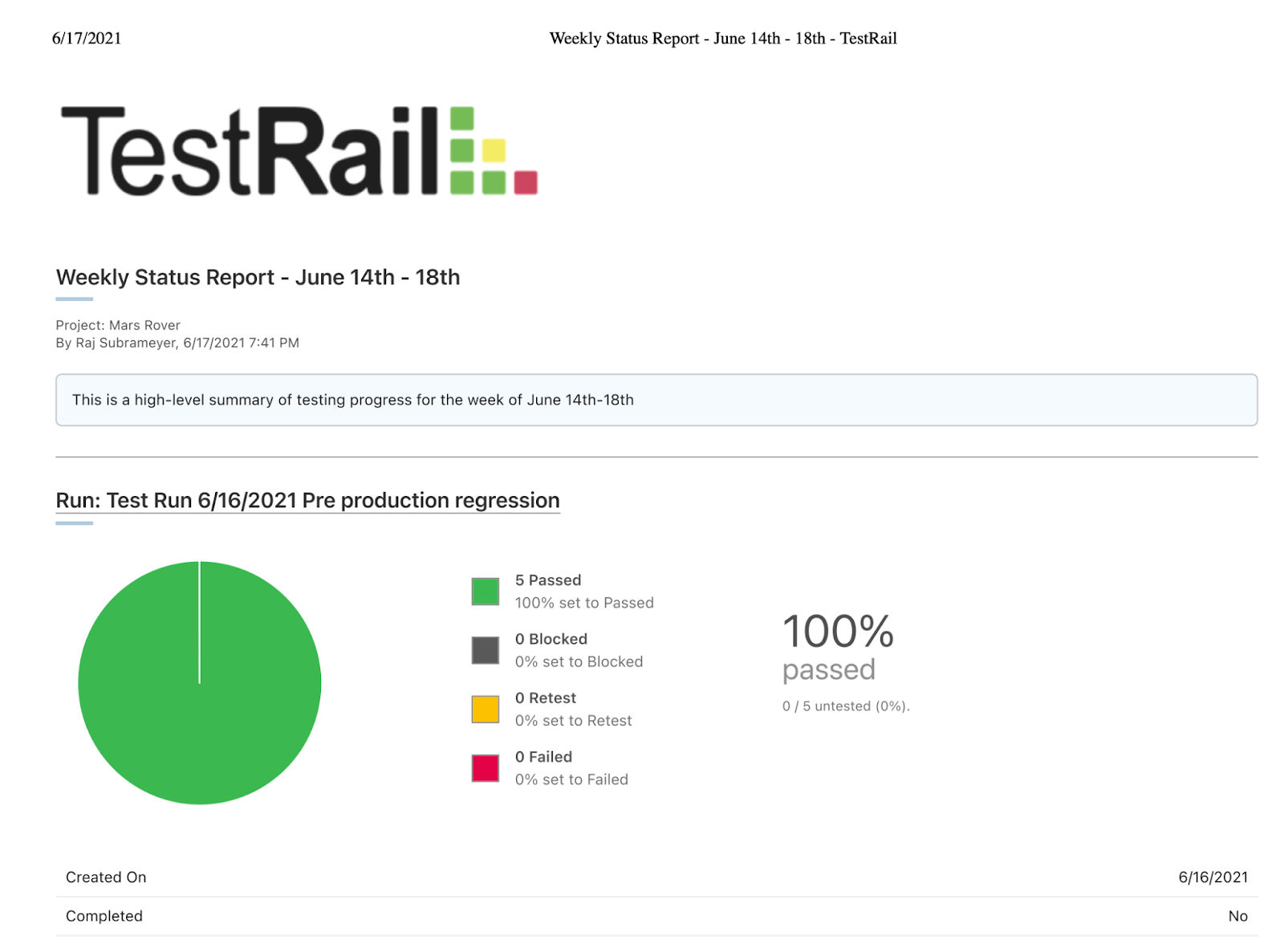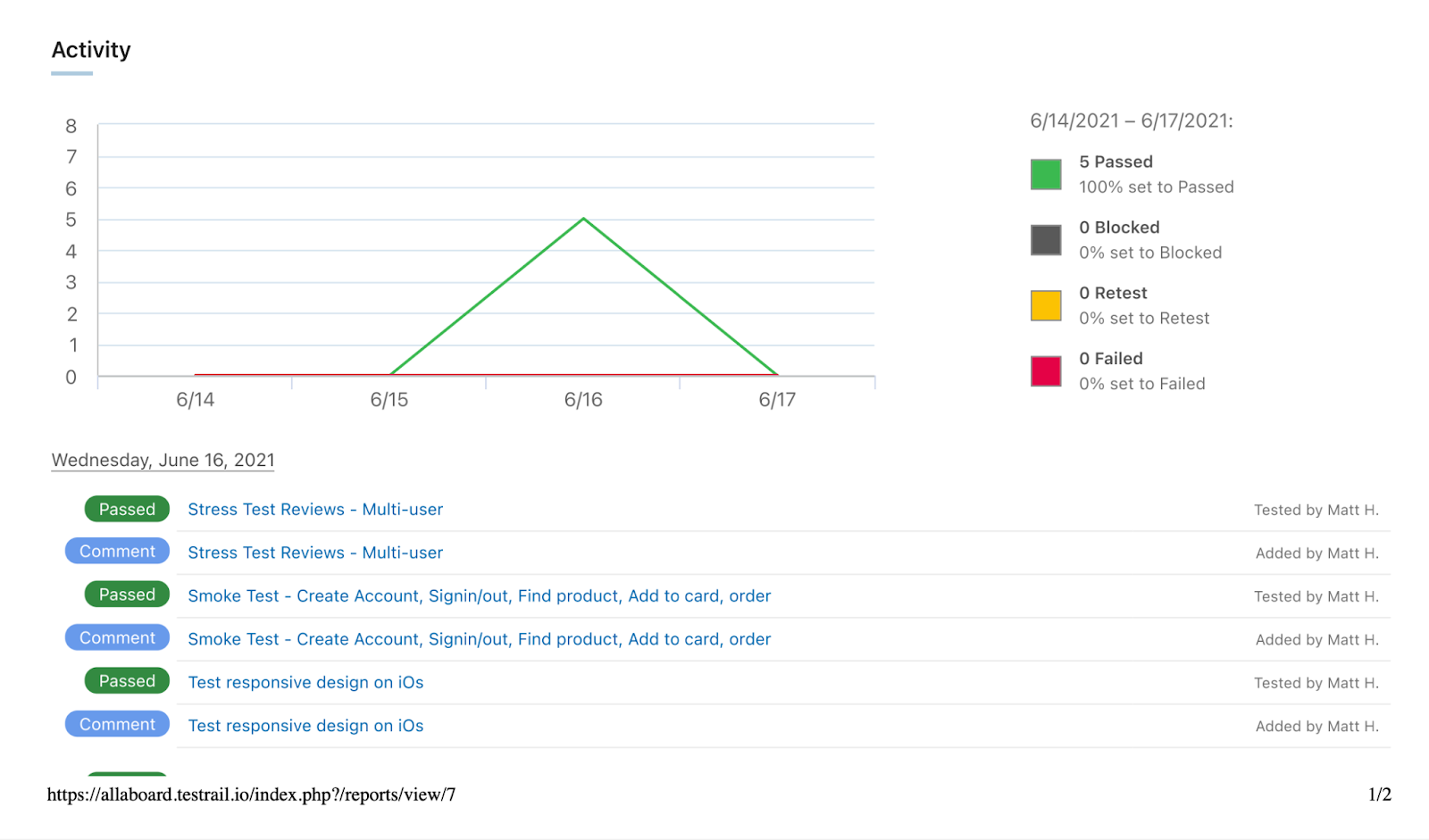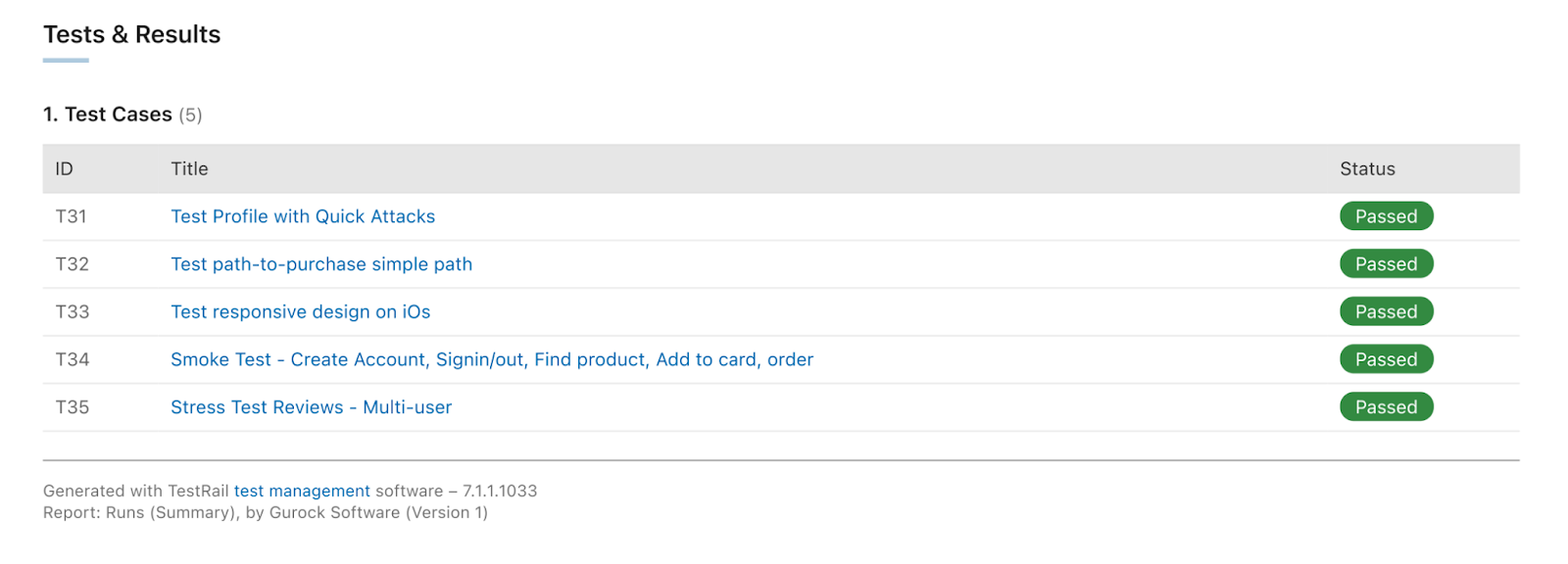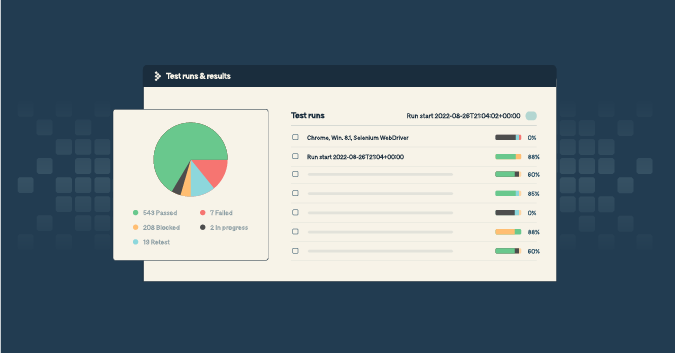QA managers and other stakeholders in a company do not have enough time to get into the granular details of each and every project they are managing. They set goals, expectations, and deadlines, and they are responsible to make sure all of them are met. This often means taking a big-picture view.
Testers perform various activities as part of the project, including writing new test cases, executing test cases, finding defects, logging defects, discussing blocker issues, and much more. All these activities are critical for the successful delivery of the product, but the stakeholders do not have time to look into each one to get information about testing progress.
Instead, they need high-level data that will help them make informed decisions. This is where the testing status report adds value.
What is a testing status report?
A testing status report is a report that contains a summary of all the testing-related activities that happened within a particular time. It highlights the status of the project using quantitative information. This makes it an effective communication tool between project teams and key stakeholders, which may include QA managers, product managers, release managers, and other folks on the leadership team.
The status report is an aid to answer some common questions:
- Is the project progressing according to plan?
- Will we release the product on time?
- Are there any critical defects that still need to be addressed?
- Are there any blocking issues that affect timelines?
- Does the project need extra resources?
Typically, a test lead or a QA manager owns the responsibility of preparing status reports at a set cadence with the required information and sending them out to different people who have key interests in the project.
Remember, this is a high-level summary of the testing progress, so it usually is only one to two pages long.
What key metrics should be included in a status report?
There are multiple ways of creating status reports, because they may have different kinds of information based on the context of the project and what stakeholders want from you in order to make informed decisions.
One of the biggest problems that can happen with status reports is that the team provides a set of information that the stakeholders do not care about. So, the report is ignored and sits with a plethora of other unread emails in the inbox. As the release date approaches, the management team is surprised by the issues that still have to be addressed, and your team ends up not meeting the release deadlines. The result is a waste of time, cost, and effort for the entire company.
A more proactive approach to prevent this kind of problem is to meet with your stakeholders even before starting with the test status report. Find out what information they care about that can help them understand the status of the project. Align your status report based on this conversation.
That being said, a testing status report usually has these five key pieces of information about the status of the project:
- Project information: Details about the project name, the description, the product tested, and the version of the product.
- Test summary: High-level information about what type of testing was performed — manual, automated, exploratory, or risk-based, and the results — including whether there were critical defects, whether the product is stable, and anything that can quickly add value.
- Defect information: A breakdown of all the defects that were found during the week, including the total number of critical-, high-, medium-, and low-priority bugs found, a one-line explanation of the critical and high bugs, links for further information, and the number of defects closed.
- Blocking issues: Anything that is blocking the testing progress or anything that you feel the management team should know is a red flag
- Next week’s priorities: What your team is planning to do next week, giving insights into whether the team’s activities align with stakeholder expectations and should proceed according to plan.
How should testing status reports be shared?
The answer to this question depends on where you are in the development process. For example, if a product is planned to be in a week, people may need daily status updates. If a product is midway into a six-month release timeline, then you may send updates on a weekly or biweekly basis.
Usually, QA managers or test leads send testing status reports at the end of every week. This way, there is a continuous flow of information at a set cadence.
The status reports are sent via email or put into a central repository, like a wiki or a shared folder, so anyone can access them. In addition, teams should have a daily practice of communicating progress via daily standups, retrospective meetings, team meetings, and messaging channels like Slack.
However, you do not have to wait until the end of the week to relay important information. Sometimes you may have to share it immediately through various other channels so the team can take quick action.
How can tools be used to produce testing status reports?
Historically, teams have used Word documents and Excel sheets to produce testing status reports. One big challenge of doing this manually is that it takes a lot of time. QA managers and test leads used to allocate a significant portion of the day just to gather all the required information and enter it in the tables and rows.
Now, all this data can be gathered and reports can be generated automatically with a click of a button, saving hours that can be better spent focusing on other testing activities. You can even customize the status reports based on the information you want to highlight.
Some tools may require time to configure and support only certain programming languages, or you could use a test management tool such as TestRail to easily manage all the testing activities and generate reports instantly, regardless of the framework and programming language used.
Here is an example of a testing status report generated by TestRail:




A sample status report generated by TestRail
Figuring out the right information to put on a testing status report is always a challenge. It varies based on the project and the type of information stakeholders want to know. At the end of the day, the report is still a vital communication tool to keep everyone abreast of the status of the project and aid in making informed decisions.
Do you use a testing status report? If not, evaluate whether this would be useful in your organization. It may be time to start.



